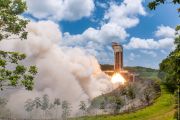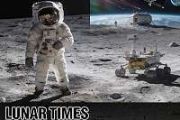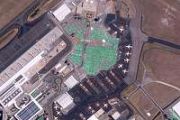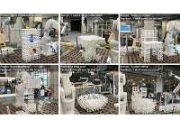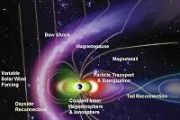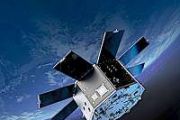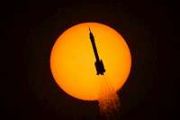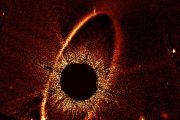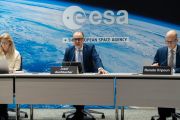
Copernical Team
Future of Copernicus Sentinel Expansion missions secured
 The Copernicus Sentinel Expansion Missions are poised to significantly advance Europe's Earth observation capabilities, following the confirmation of funding for the development of all six missions. This progress is largely attributed to the United Kingdom's recent decision to rejoin the European Union's Copernicus programme, ensuring the completion of these important missions. The announcement
The Copernicus Sentinel Expansion Missions are poised to significantly advance Europe's Earth observation capabilities, following the confirmation of funding for the development of all six missions. This progress is largely attributed to the United Kingdom's recent decision to rejoin the European Union's Copernicus programme, ensuring the completion of these important missions. The announcement NASA Pilots Add Perspective to Research
 NASA research pilots are experts on how to achieve the right flight-test conditions for experiments and the tools needed for successful missions. It is that expertise that enables pilots to help researchers learn how an aircraft can fly their technology innovations and save time and money, while increasing the innovation's readiness for use.
NASA pilots detailed how they help researchers f
NASA research pilots are experts on how to achieve the right flight-test conditions for experiments and the tools needed for successful missions. It is that expertise that enables pilots to help researchers learn how an aircraft can fly their technology innovations and save time and money, while increasing the innovation's readiness for use.
NASA pilots detailed how they help researchers f VAST sets new standard for testing future space communication frequencies
 A new advanced hardware system known as the Sub-Millimetre Wave Validation Standard Antenna, or VAST, will serve as a critical test target for Europe's satellite antenna test facilities. Though not designed for space missions directly, VAST is engineered to validate the measurement of complex radio frequencies used in future space operations.
"The VAST is a well-characterised, mechanically
A new advanced hardware system known as the Sub-Millimetre Wave Validation Standard Antenna, or VAST, will serve as a critical test target for Europe's satellite antenna test facilities. Though not designed for space missions directly, VAST is engineered to validate the measurement of complex radio frequencies used in future space operations.
"The VAST is a well-characterised, mechanically Near-Earth Microquasar found to emit powerful gamma radiation
 For decades, astronomers have focused on distant galaxies as the source of high-energy electromagnetic radiation. However, new observations from the HAWC observatory have revealed that microquasars - compact binary systems within our own galaxy - are also capable of producing gamma photons with extremely high energies.
Researchers from the High-Altitude Water Cherenkov Gamma-Ray Observator
For decades, astronomers have focused on distant galaxies as the source of high-energy electromagnetic radiation. However, new observations from the HAWC observatory have revealed that microquasars - compact binary systems within our own galaxy - are also capable of producing gamma photons with extremely high energies.
Researchers from the High-Altitude Water Cherenkov Gamma-Ray Observator Astronomers detect ancient lonely quasars with murky origins
 A quasar is the extremely bright core of a galaxy that hosts an active supermassive black hole at its center. As the black hole draws in surrounding gas and dust, it blasts out an enormous amount of energy, making quasars some of the brightest objects in the universe. Quasars have been observed as early as a few hundred million years after the Big Bang, and it's been a mystery as to how these ob
A quasar is the extremely bright core of a galaxy that hosts an active supermassive black hole at its center. As the black hole draws in surrounding gas and dust, it blasts out an enormous amount of energy, making quasars some of the brightest objects in the universe. Quasars have been observed as early as a few hundred million years after the Big Bang, and it's been a mystery as to how these ob Southern Launch and Varda secure Australian approval for spacecraft re-entry at Koonibba Test Range
 Southern Launch and Varda Space Industries, a U.S.-based company focused on microgravity-enabled life sciences, have been granted approval by the Australian Government for a series of spacecraft returns at the Koonibba Test Range. This marks the first time the Australian Government has authorized a spacecraft re-entry under the revised Space (Launches and Returns) Act 2018. Three pharmaceutical
Southern Launch and Varda Space Industries, a U.S.-based company focused on microgravity-enabled life sciences, have been granted approval by the Australian Government for a series of spacecraft returns at the Koonibba Test Range. This marks the first time the Australian Government has authorized a spacecraft re-entry under the revised Space (Launches and Returns) Act 2018. Three pharmaceutical NASA targets multiple Commercial Crew missions in 2025
 NASA, alongside partners Boeing and SpaceX, is advancing its plans for next year's International Space Station (ISS) missions as part of the agency's Commercial Crew Program. While preparatory efforts continue, NASA anticipates an active year of orbital operations with targeted mission timeframes, contingent on operational readiness and station scheduling.
b>Crew-10 Mission br> /b>
The S
NASA, alongside partners Boeing and SpaceX, is advancing its plans for next year's International Space Station (ISS) missions as part of the agency's Commercial Crew Program. While preparatory efforts continue, NASA anticipates an active year of orbital operations with targeted mission timeframes, contingent on operational readiness and station scheduling.
b>Crew-10 Mission br> /b>
The S Space Development Agency awards major contract to Iridium and GDMS for Enhanced Ground System Integration
 Iridium Communications Inc. (Nasdaq: IRDM), a global leader in satellite communications, has announced that the Space Development Agency (SDA) awarded a $491.6 million contract modification to the partnership of General Dynamics Mission Systems (GDMS) and Iridium. The contract supports the Ground Management and Integration (GMI) program for the Proliferated Warfighter Space Architecture (PWSA),
Iridium Communications Inc. (Nasdaq: IRDM), a global leader in satellite communications, has announced that the Space Development Agency (SDA) awarded a $491.6 million contract modification to the partnership of General Dynamics Mission Systems (GDMS) and Iridium. The contract supports the Ground Management and Integration (GMI) program for the Proliferated Warfighter Space Architecture (PWSA), Intelsat and US Army Complete pilot program for Managed Satellite Communication Services
 Intelsat, a leader in global satellite and terrestrial network operations, recently concluded a managed satellite communications pilot program for the U.S. Army, marking the completion of the Army's first multi-vendor Satellite as a Managed Service (SATaaMS) Pilot. This initiative provided the Army with new, flexible multi-orbit SATCOM support under a fully managed service model.
"The gove
Intelsat, a leader in global satellite and terrestrial network operations, recently concluded a managed satellite communications pilot program for the U.S. Army, marking the completion of the Army's first multi-vendor Satellite as a Managed Service (SATaaMS) Pilot. This initiative provided the Army with new, flexible multi-orbit SATCOM support under a fully managed service model.
"The gove Hydrosat Wins $1.9 Million Contract from US Air Force to Boost Thermal Imagery Capabilities
 Hydrosat, a climate tech firm specializing in thermal imagery for monitoring water stress in agriculture and mitigating climate change impacts, has secured a $1.9 million contract with the US Air Force. The agreement will enable Hydrosat to provide its thermal satellite data to tackle key challenges within the Department of the Air Force (DAF), aiming to enhance the nation's defense capabilities
Hydrosat, a climate tech firm specializing in thermal imagery for monitoring water stress in agriculture and mitigating climate change impacts, has secured a $1.9 million contract with the US Air Force. The agreement will enable Hydrosat to provide its thermal satellite data to tackle key challenges within the Department of the Air Force (DAF), aiming to enhance the nation's defense capabilities 












